Captive cross inside a cube
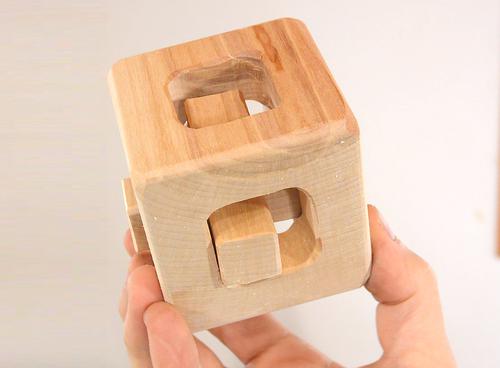 This puzzle was inspired in part by Steve Ramsey's
cube within a cube
puzzle video. I thought I'd try one of those too, but, I wanted to give
it my own twist.
This puzzle was inspired in part by Steve Ramsey's
cube within a cube
puzzle video. I thought I'd try one of those too, but, I wanted to give
it my own twist.
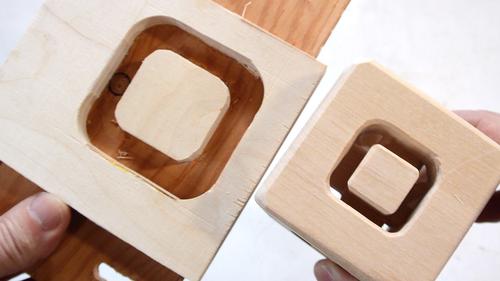 My first thought was that I could drill square holes instead of round ones
using my pantorouter. And then I
had the idea of making it a hollow hole. This would leave a sort of 3-dimensional
cross inside the cube. At left, the hole, and the 2x
sized template for the pantouter.
My first thought was that I could drill square holes instead of round ones
using my pantorouter. And then I
had the idea of making it a hollow hole. This would leave a sort of 3-dimensional
cross inside the cube. At left, the hole, and the 2x
sized template for the pantouter.
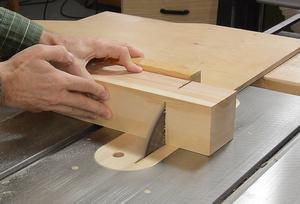
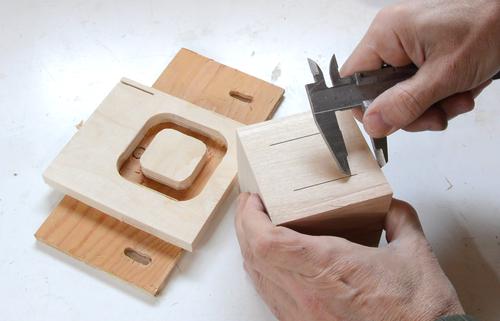 I cut a cube, 72 mm to a side, from some solid birch wood that came from a
piece of firewood. I'm cutting
it off behind my crosscut sled, because I only had a 9" blade in
the saw at that moment (on the sled, the blade would not have reached through).
Then I marked where the edge of the holes need to be. I used these lines
to line it up on the pantorouter. I only need lines on one face to set
up the machine.
I cut a cube, 72 mm to a side, from some solid birch wood that came from a
piece of firewood. I'm cutting
it off behind my crosscut sled, because I only had a 9" blade in
the saw at that moment (on the sled, the blade would not have reached through).
Then I marked where the edge of the holes need to be. I used these lines
to line it up on the pantorouter. I only need lines on one face to set
up the machine.
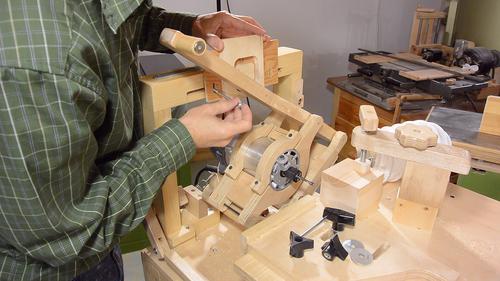 The tricky part of the setup is that I have to install the template with
the guide bearing already in the template, otherwise, I can't get it in.
With the all metal
pantorouter I could retract the bearings, but the wooden one, with
its mounting slots in the template holder, is a bit more convenient
for mounting homemade templates to. That, and the
clamp on the homemade one is more convenient for this job.
The tricky part of the setup is that I have to install the template with
the guide bearing already in the template, otherwise, I can't get it in.
With the all metal
pantorouter I could retract the bearings, but the wooden one, with
its mounting slots in the template holder, is a bit more convenient
for mounting homemade templates to. That, and the
clamp on the homemade one is more convenient for this job.
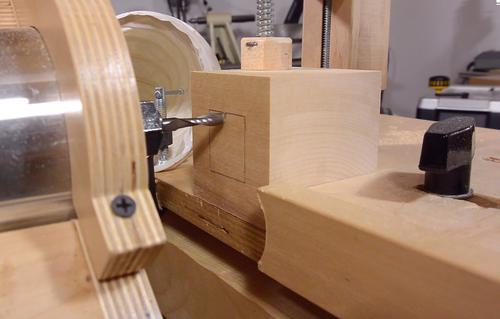
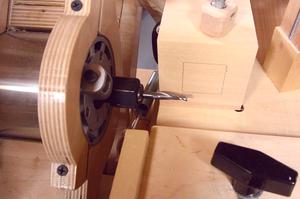 Lining it up. Bsically, moving through the range of motion and making
sure I'm the same distance from the line on all sides. For up and down,
I have to move the template. For side to side,
it's easier to move the cube.
Lining it up. Bsically, moving through the range of motion and making
sure I'm the same distance from the line on all sides. For up and down,
I have to move the template. For side to side,
it's easier to move the cube.
For setting the depth, I have to make sure the router reaches as far as the line plus the thickness of the bit (see image at right).
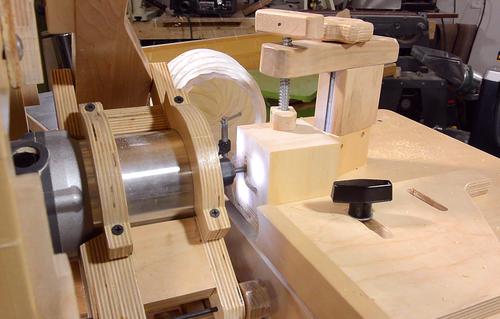
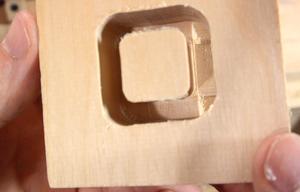 Routing it out. Initially, I just kept going around the square as I cut it out,
but I found it's better to go back and forth over one straight segment at a time.
Routing it out. Initially, I just kept going around the square as I cut it out,
but I found it's better to go back and forth over one straight segment at a time.
I after cutting two faces, I check that the depth is about right.
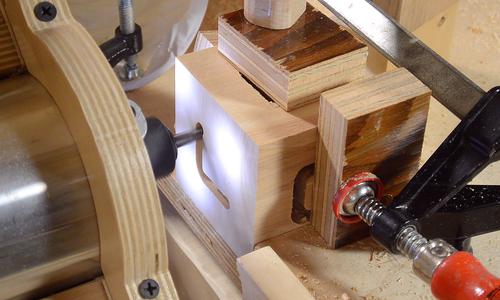 I saved an end-grain face for the end. The end grain is much easier to cut
because, as the bit moves side to side, it's actually cutting side grain.
I saved an end-grain face for the end. The end grain is much easier to cut
because, as the bit moves side to side, it's actually cutting side grain.
When the final face is cut, the cross on the inside is released. To prevent it from getting caught in the bit, I put a clamp around the cube's sides, so that the cross is held from four sides. This worked out ok.
 The finished cube is a neat sort of object. It makes a nice noise when you shake it,
but I have to say, it's really not that exciting. I think the cube within a cube
type "puzzle" is more interesting.
The finished cube is a neat sort of object. It makes a nice noise when you shake it,
but I have to say, it's really not that exciting. I think the cube within a cube
type "puzzle" is more interesting.
See also:
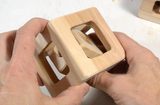 Cube in a cube in a cube
Cube in a cube in a cube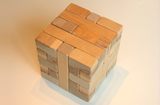 Borg puzzle
Borg puzzle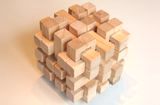 36-piece burr puzzle
36-piece burr puzzle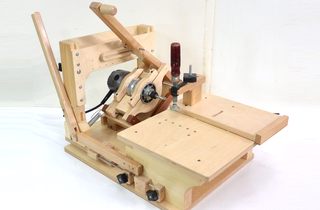 The pantorouter
The pantorouter More wooden puzzles
More wooden puzzles